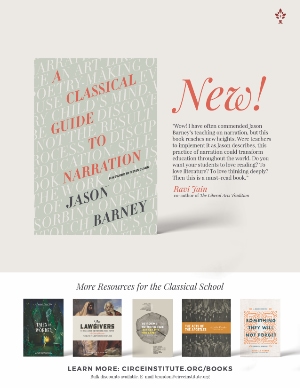Three ways it harms us – and what to do about it
MARY BLAKE FLETCHER
is a graduate of Westminster Academy in Memphis, TN, and winner of the 2022 Chrysostom Oratory Competition.
In 1994, the CEOs of some of America’s most established tobacco companies denied to Congress that nicotine was addictive. Although these companies had conducted internal studies and discovered the truth, they hid this knowledge, and even used it to beat out competition by manipulating nicotine levels in their products. It’s hard to imagine in today’s world that these lies nearly prevailed over the truth.
Like the tobacco executives back in 1994, the CEOs of Silicon Valley use the power of well-formulated designs to get us hooked on their products. We are so distracted by the “benefits” and “community” of our smartphones that we fail to understand the ways in which our devices are purposefully designed to perpetuate addiction (and countless other issues). This design is called “persuasive technology,” and it is the nicotine of Silicon Valley: addictive, powerful, and so subtle we don’t notice when we consume it.
A New Addiction
While the initial intention might have been to help us build community, the introduction of persuasive technology has caused the smartphone and its services to undermine the very values that made them appealing in the first place. People who once joined social media or bought a phone to stay in touch with friends across the world are now unable to maintain an uninterrupted conversation with the friend sitting across the table. We are addicted to our screens.
Psychology Today defines addiction as “a condition where a person engages with a substance, or in a behavior, for which the rewarding effects are incentive to pursue it repeatedly despite detrimental consequences.”* Just like a nicotine addict’s relationship with cigarettes, smartphone users often find that they lack the ability to end unhealthy habits by willpower alone, no matter how hard they try.
Persuasive technology is designed to foster behavioral addictions using two particular ingredients: intermittent positive reinforcement and the drive for social approval. Instead of using a chemical interaction—like the surge of dopamine from the nicotine in a cigarette—persuasive technology utilizes unpredictability to release dopamine, and feedback buttons to reinforce addictive behavior.
Author Paul Lewis puts it this way: posting on social media is gambling. “Will your post get likes, hearts, or retweets? Or will it languish with no feedback?”* The former creates a feeling of pleasure in our brains, while the latter makes us feel rejected. Either way, the outcome is hard to predict, making the activity of posting and checking maddeningly appealing.
There are practical ways to reorient your relationship with technology. 1. Do a digital declutter: abstain from all optional technology for 30 days to discover which apps provide true benefit to your life and support your values. 2. Establish rules for what technology you use based on your values, and remove what doesn’t make the cut.
A New Enlightenment
“Solitude deprivation” is a state in which one spends little to no time alone with his or her own thoughts, and it is quickly becoming a state of normalcy for most of the world. Modernity’s conflict with solitude may not be a new issue. Enlightenment thinker Blaise Pascal famously wrote, “All of humanity’s problems stem from man’s inability to sit quietly in a room alone.” But no form of technology has ever given mankind the power to be consistently distracted from his own mind as much as persuasive technology.
If solitude deprivation is harmful, the first place we should find evidence is the “iGen”: the first generation in history to enter the teenage phase of life with constant access to internet connectivity. Unfortunately, this is exactly the case. Of all the differences between millennials and the “iGen,” the most troubling is the iGen’s record-setting mental health crisis.
Psychology professor Jean Twenge attributes iGen’s poor mental health to an inability to process daily events, make sense of emotions, and reflect on relationships: an inability resulting from spending so much time distracted from solitude by persuasive technology. “We are conditioning a whole generation of people to think that when we are uncomfortable or lonely, uncertain or afraid, we have a digital pacifier that atrophies our ability to deal with it,” relates Tristan Harris in The Social Dilemma.*
We crave social validation, and we find our sense of identity partially in the people around us. At the time of our creation, God intended this to be a good thing—and often, it still is! But when social media employs persuasive technology to take over and redefine our sense of self-worth, it becomes very dangerous.
How can social media users take back their identity?
1. Refrain from clicking the “like” button or tagging others in posts. Social media companies did not invent this feature to connect people, but to increase engagement on their platforms for profit. Ignoring the “like” button can actually motivate us to pursue in-person fellowship.
2. Alter your relationship with texting. Put your phone in Do Not Disturb mode, which requires you to intentionally view texts, and you might change your mindset from viewing texts as emergencies or main outlets of communication, to viewing them as much less important.
A New Focus
Humans gravitate towards the easy road. Given a choice between passive entertain- ment and the effort required to pursue Christian fellowship, our base instincts will drive us to choose the passive option.
During a project on the factors of addiction, Johann Hari, an expert in the field of rehabilitation, found that “the opposite of addiction is connection.”* Community is essential to maintain an intentional Christian walk. 1 Thessalonians 5 commands us to “encourage one another and build one another up.” Having the church as a source of accountability and encour- agement is essential to the Christian life. Screens are undermining the rich experi- ences of worship and Christian fellowship.
According to studies by the Mayo Clinic, common situations that trigger the urge to smoke are the same as those that trigger the urge to check your phone: breaks during work or school, driving in the car, discomfort or boredom, being with others who are engaging in the same behavior. A solution to the undercurrent of addicted urge is to end the idea that our phone is an integral part of our day. Regularly spend a few hours away from your phone every day—replace it with a productive activity or new hobby if necessary.
It is often said that the impact of technology depends largely on the type of person using it. After all, Google and Facebook are just places to connect with people and find information. Use technology like any other tool, and you can avoid the potential side effects.
But the definition of a smartphone as a tool is incorrect. A tool waits quietly, and patiently, until it is needed. Your smartphone alerts you constantly. It demands things from you. It does not wait to be used.
When was the last time a hammer alerted you to use it, a bicycle distracted you from class, a toilet brush drew your attention away from a friend? Your smartphone is not a tool! There are only two industries which call their customers “users”: illegal drugs and software.
If we are certain that persuasive technology is harmful, how can we know it’s the root cause of the issues we blame it for? After all, divisive opinions and problematic mental health are ultimately results of the fall. Benoit Denizet-Lewis is a New York Times journalist who spent several years studying mental health statistics. The goal? To implicate a cause for iGen’s mental health crisis that was not the smartphone. Benoit ended up finding that this truly was the only explanation that fit the timing. “Lots of potential culprits, from stressful current events to increased academic pressure existed before the spike in anxiety that [began] around 2011. The only factor that dramatically increased right around the same time as teenage anxiety was the number of young people owning their own smartphones.”*
The cost of being online is time spent with real people in the real world, including ourselves.
Common Sense
Thirty years after the conspiracy to conceal the danger of smoking, the world of nicotine usage has changed for the better. It is common knowledge even to the youngest generations that smoking is harmful! But achieving this result was not easy.
Already, many integral members of early Silicon Valley have formed non-profits whose goal is to bring the technology industry back to its original purpose of accomplishing good. There are also many representatives in Congress who are faithfully working to research and understand how they can help reign in persuasive technology.
But it is up to each of us to set an example for how to use technology for good. It is not our job to reject the innovations of the internet age, but to reject the way that we and our culture currently engage with them. As with any other feat of human achievement, we can be enthralled by the possibilities of technology’s future, but we cannot unlock this potential for good until we put in the effort to take control of our own digital lives. As author Cal Newport so eloquently states, “This isn’t reactionary, it’s common sense.”* ✤
Mary Blake Fletcher is a proud Memphis native who attended Westminster Academy from 1st-12th grade. This fall, she will be attending Auburn University to pursue a double major in piano performance and English literature. When she is not in school, Mary Blake enjoys classical ballet, teaching piano, reading up on Beatles trivia, and international travel.
Works Cited
Adam Alter, Irresistible: The Rise of Addictive Technology and the Business of Keeping Us Hooked. Penguin, 2017.
“Addiction.” Psychology Today, https://www.psychologytoday.com/basics/addiction, accessed December 12, 2021.
“Down the Rabbit Hole by Design.” Your Undivided Attention from the Center for Humane Technology, 10 July 2019, https://www.humanetech.com/podcast/4-down-the-rabbit-hole-by-design
Guillaume, Chaslot. “Our Manifesto.” https://www.algotransparency.org/our-manifesto.html. Accessed 30 October, 2021.
John E. Grant, Marc N. Potenza, Aviv, Weinstein, and David A. Gorelick. “Introduction to Behavioral Addictions.” American Journal of Drug and Alcohol Abuse 36, no. 5 (2010): 233-41, https://www.ncbi.nlm.nih.gov/pmc/articles/PMC3164585.
Jones, Rashida. “Suspect Development Systems.” https://ainowinstitute.org/research.html. Accessed November 11, 2021.
Newport, Cal. Digital Minimalism. Penguin, 2019.
Paul Lewis, “Our Minds Can Be Hijacked: The Tech Insiders Who Fear a Smartphone Dystopia.” Guardian, https://www.theguardian.com/technology/2017/oct/05/smartphone-addiction-silicon-valley-dystopia. Accessed October 14, 2021.
“Smoking Guns.” American Scandal from Wondery, July 28, 2020. https://podcasts.apple.com/us/podcast/big-tobacco-smoking-guns/id1435516849?i=1000483145809
The Social Dilemma. Directed by Jeff Orlowski, 2020.
U.S. House. Subcommittee on Communications, Technology, Innovation, and the Internet. 2019. Optimizing for Engagement: Understanding the Use of Persuasive Technology on Internet Platforms. Hearing, June 25.
U.S. Congress. Subcommittee on Communications, Technology, Innovation, and the Internet. “Optimizing for Engagement: Understanding the Use of Persuasive Technology on Internet Platforms.” (Date: 6/25/2019). Text From: Written Testimony of Rashida Richardson; Accessed October 15, 2021.
U.S. Congress. Subcommittee on Communications, Technology, Innovation, and the Internet. “Optimizing for Engagement: Understanding the Use of Persuasive Technology on Internet Platforms.” (Date: 6/25/2019). Text From: Written Testimony of Dr. Stephen Wolfram; Accessed October 15, 2021.
U.S. Congress. Subcommittee on Communications, Technology, Innovation, and the Internet. “Optimizing for Engagement: Understanding the Use of Persuasive Technology on Internet Platforms.” (Date: 6/25/2019). Text From: Written Testimony of Tristan Harris; Accessed October 15, 2021.
U.S. Congress. Subcommittee on Communications, Technology, Innovation, and the Internet. “Optimizing for Engagement: Understanding the Use of Persuasive Technology on Internet Platforms.” (Date: 6/25/2019). Text From: Written Testimony of Maggie Stanphil, Director of User Experience, Google; Accessed October 15, 2021.












